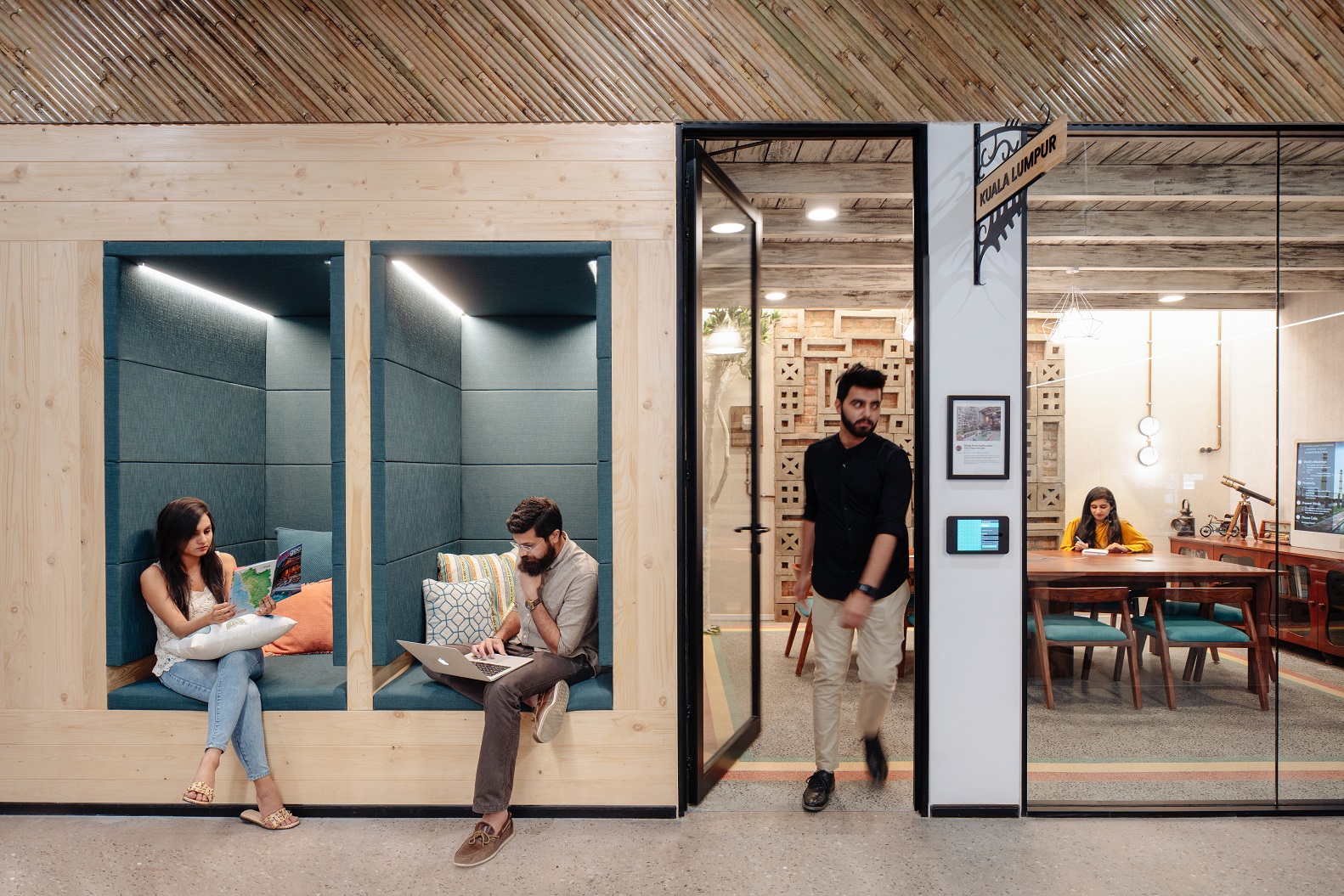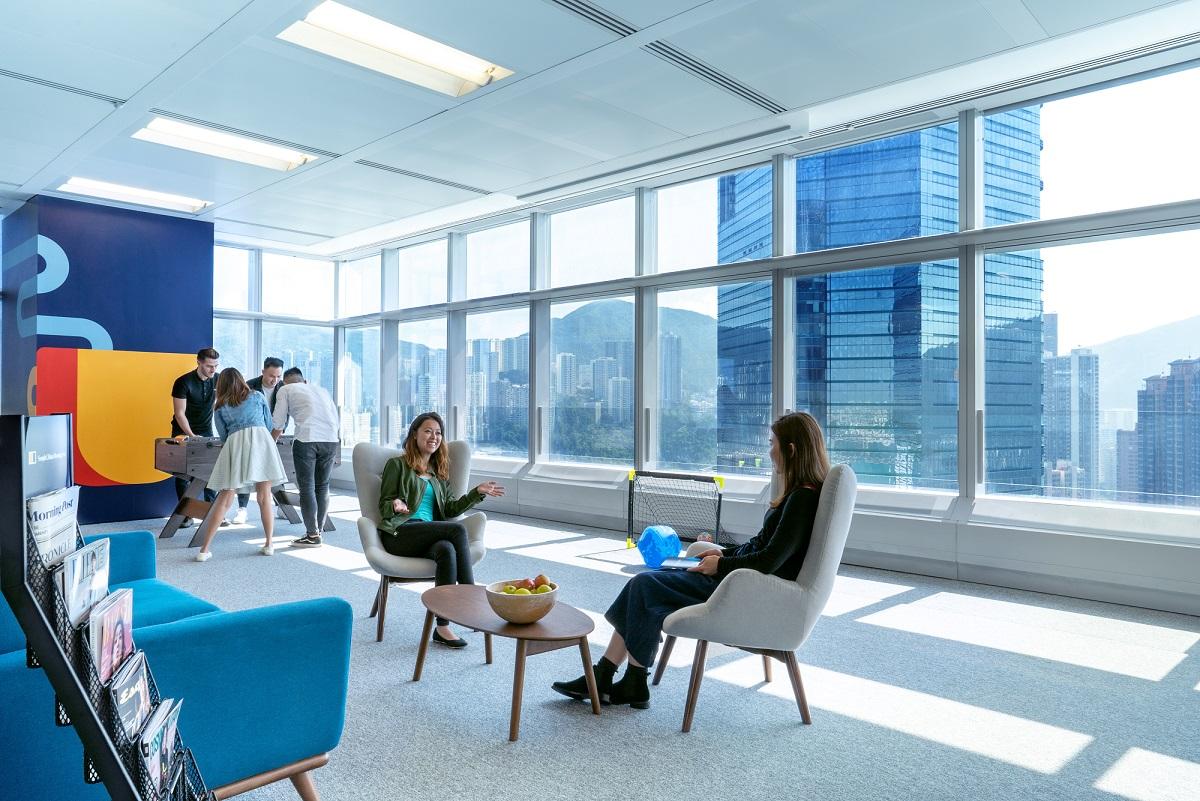Shaping a positive employee experience journey through workplace design
“People don’t quit jobs, they quit their bosses.”
Or so the saying goes. Today, it goes much beyond just bad bosses. Job satisfaction and professional fulfilment are important to millennial and Gen Z employees. If they feel disengaged at their workplace (be it due to incompetent managers, toxic work cultures or unchallenging job roles), they don’t hesitate to quit and look for something they’re actually passionate about.
There is, however, a startling disconnect between why managers think employees leave, and why they actually do. For instance, 89% of bosses feel that people leave for money — whereas only 12% of employees have been found to leave for financial reasons1. This disconnect is proving expensive for companies around the world. Disengaged employees cost firms up to $605 billion in lost productivity2. And when highly skilled workers quit, replacing them costs companies 200% of the employee’s annual salary3.
This is why ensuring employee engagement is as important today as offering a great client experience. However, as companies look for ways to improve employee engagement, they turn to band-aid solutions like rewards and team-building activities. But for a lasting impact, they need to take a more holistic approach and craft a workplace strategy that keeps people engaged throughout their time at the organisation. Let’s explore the possibilities and see how workspace design can be a powerful tool in achieving these goals at each stage of the Employee Lifecycle (ELC).
Stage 1: Attract and recruit
When candidates walk in for an interview, they are on the lookout for cues about the workplace — and physical design is an important reflection of work culture. If they are greeted by well-designed spaces with natural light and comfy nooks, they are more likely to accept the job offer than if they see a dull, uninspiring office. In fact, 81% of respondents in one survey said that they would turn down a job offer if they did not like the workplace4. Another study showed that company culture and the available facilities actually outweigh salary-based motivations5.
Flexibility is particularly important to millennial and Gen Z candidates too. They want to be able to work remotely or plan out their own work timings, so they want to know if the office has relevant policies and technology in place to enable them to do that. When in office, they look for choice in work areas. Having cosy collaboration zones, standing desks, and aesthetic work clusters and pods gives them the choice they are looking for. Facilities like on-site gyms, nap rooms and outdoor or rooftop lounges are other fantastic perks that can swing their decision in your favour.
Stage 2: Hire and onboard
The first day in a new job can be stressful, and unfortunately, disengagement can start right from Day 1. There’s nothing more disconcerting for an employee than to walk into their new workplace and get the impression that nobody was prepared for their arrival. Completing all the documentation beforehand and ensuring that they are already on the system is a great way around this. Biometric systems are not just a fool-proof security measure — they are also a fantastic way to make young employees feel like they belong, right from their first day. Instead of running around for their access cards (maybe without even knowing whom to approach), they can simply look into a sensor and be scanned right in. Smart wayfinding methods can also go a long way in helping them feel less disoriented in a new environment.
Smart orientation strategies don’t just onboard employees — they integrate them into the team. For instance, if your company hosts fun events and activities on Fridays, why not ask people to start on a more casual note at the end of the week instead of on a Monday? Alternately, craft an orientation programme that highlights the creativity and innovation of your brand. When someone new joins the team at Buildit@Wipro, they plan a fun treasure hunt with clues that take them around the entire office and bring them in contact with certain key people they will be working with. This game functions as a fun ice breaker that is a far cry from the traditional stifled introductions on a typical first day at work.
Stage 3: Develop & engage
Once an employee has been integrated into the team, the company needs to keep them motivated and facilitate them to do their job well. Different people work well in different environments — while some find open design concepts stimulating, others find them distracting. Companies that adopt activity-based working styles have an edge here, with spaces designed specifically for the different functions of an employee’s workday.

Airbnb does this very well with its office in Gurgaon, which has an ideal mix of collaboration and social spaces. They have thematic meeting rooms, designed based on some of the top Airbnb properties, to provide variety in the way people brainstorm and discuss ideas. The beautiful mezzanine levels function as semi-private retreats that afford a certain degree of privacy without being completely cut off from the rest of the office. They also have cosy work nooks where people can go to concentrate and get some focussed work done. With so many choices in work spaces, Airbnb is able to keep their employees engaged every day — whatever task an employee is working on, they find a space perfectly suited for it.
Stage 4: Perform & manage
When someone has been in the company for a while, they feel the pressure to prove themselves, both through their work and through the personal bonds they have developed with their colleagues. These fear-driven motives can quickly get exhausting and can eventually make employees feel resentful and disengaged. This is yet another chance for employers to reassure and support their workers by building a culture of psychological safety. Teams perform better when they don’t fear the consequences of every little mistake.
Digital workplaces go a long way in reducing the stigma of seeking help. Platforms like Slack and Hangouts are invaluable in getting around people’s natural apprehension of asking for help in public — and such safe spaces can be achieved through workspace design too. Cosy collaboration pockets, private seating areas in the cafes, and lounges set aside from the main workspace let employees have one-on-one interactions with their peers and managers without fearing judgement. Many companies are also fostering a culture of giving, with senior employees empowering others through knowledge sharing sessions and mentorship programmes.
Stage 5: Foster growth & transition
Young employees are always looking to get challenged with their work, no matter how long they’ve been at an organisation. When monotony sets in and they feel stuck in a rut, they consider seeking new challenges elsewhere. Companies that want to maintain sustained engagement would do well to consider ways to keep things dynamic for their employees. One way to do this is by having adequate social spaces, cafes and lounges within the office. These spaces bring together people from different teams who may ordinarily never have interacted. This promotes cross-team innovation, and encourages people to think beyond their roles and try new things.
Millennial and Gen Z employees also do not keep their professional and personal lives separate to the degree that generations before them did. It is not unusual for them to take their work home or continue working on a project on their own time. It is therefore imperative to look at their holistic fulfilment that goes much beyond their professional roles. Many companies today see employees’ family and friends as a larger part of their community and are invited to celebrate successes and achievements with the team. One of our clients, an Asian financial and asset management company in New York, sets apart one day a week as games night. After office hours, the boardroom converts into a game room for all the employees to play board games. During these sessions, employees are encouraged to bring a friend or a family member to participate. This is not only a great way to use meeting rooms as multi-purpose spaces, but it also helps to showcase the company culture to the outside world.
These are just some of the ways you can improve workplace engagement and keep employees stimulated. Reach out to us and we’ll be happy to discuss solutions tailored to your firm’s requirements.
As Associate Director, Global Client Engagement, Nishar Fatema manages global clients in North America for the design and execution of their projects in APAC. Her career has spanned many roles — architect, workplace design and business strategist — and is backed by a proven track record in workplace design methodologies and business strategy and a deep focus on workplace design & build and employee engagement & experience. She has also authored a research piece "Understanding of an ornamentation in Islamic architecture" and co-authored a book on vernacular housing of North India called "MATRA: The measure".






